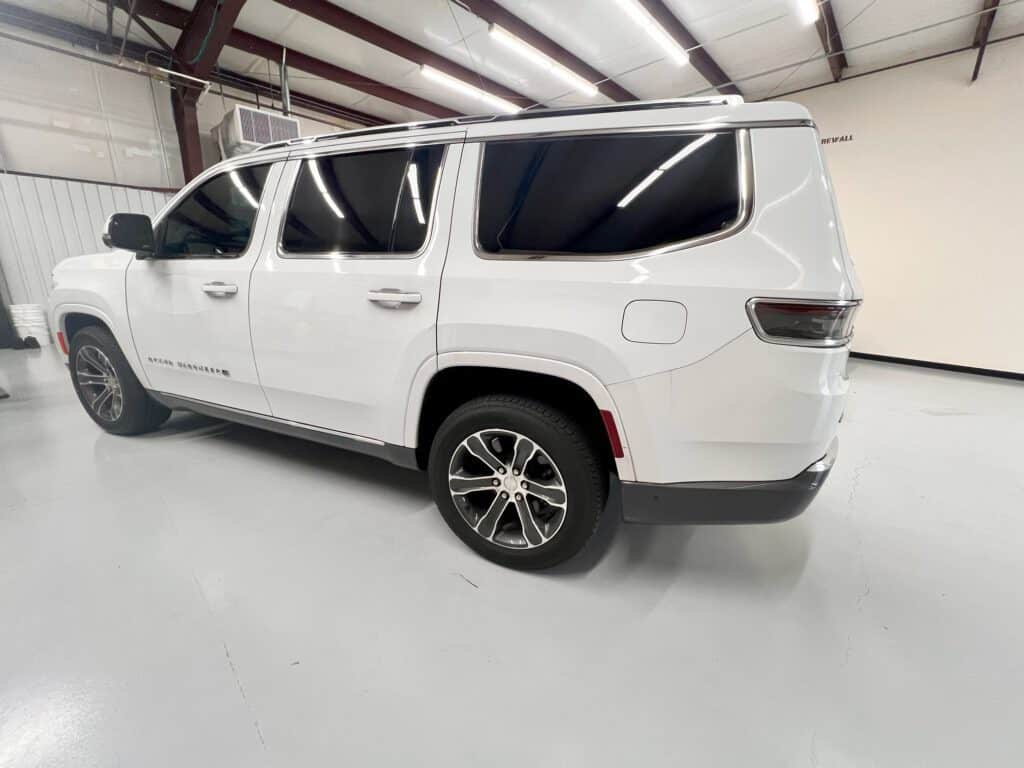Introduction
In Georgia, window tinting isn’t just about aesthetics—it’s a legal matter with specific guidelines designed to balance safety, visibility, and personal preference. Whether you’re a car enthusiast looking for a sleek finish or simply want UV protection, understanding Georgia’s window tint laws is crucial to avoiding fines and ensuring compliance.
In this comprehensive guide, we’ll explore:
- Georgia’s legal tint percentages
- Exemptions and medical allowances
- Penalties for non-compliance
- Benefits of legal window tinting
Let’s dive into what you need to know about window tint laws in Georgia in 2025.
1. Georgia’s Legal Window Tint Limits
The state of Georgia follows specific guidelines for window tinting, primarily measured in Visible Light Transmission (VLT%), which indicates how much light must pass through the tint.
Passenger Vehicles:
| Window | Legal VLT% | Restrictions |
|---|---|---|
| Windshield | Above AS-1 Line (or max 6 inches) | Must allow over 32% VLT, no red/amber tint |
| Front Side Windows | 32% VLT or higher | No mirrored or reflective tint |
| Rear Side Windows | 32% VLT or higher | No restrictions on color |
| Rear Window | 32% VLT or higher | No restrictions on color |
SUVs, Trucks, and Vans:
| Window | Legal VLT% | Restrictions |
|---|---|---|
| Windshield | Above AS-1 Line | Must allow over 32% VLT |
| Front Side Windows | 32% VLT or higher | No mirrored or reflective tint |
| Rear Side Windows | No Limit | Any darkness allowed |
| Rear Window | No Limit | Any darkness allowed |
Reflection & Color Restrictions
- Reflective tint: Not allowed if it reflects more than 20% of light.
- Colors prohibited: Red and amber window tints are illegal.

2. Medical Exemptions for Window Tint in Georgia
If you have a medical condition requiring additional protection from sunlight, you may qualify for a medical exemption that permits a darker window tint than the legal limit.
How to Apply for a Medical Exemption:
- Obtain a certification from a licensed physician or optometrist.
- Submit the form to the Georgia Department of Public Safety (DPS).
- Receive an exemption sticker to display on the vehicle.
⚠️ Important Note: Medical exemptions must be renewed periodically and are non-transferable to other vehicles.
3. Penalties for Illegal Window Tint in Georgia
Failing to comply with Georgia’s window tint laws can lead to fines and other legal consequences. Here’s what to expect if caught with illegal tint:
| Violation | Penalty |
|---|---|
| First Offense | Fine up to $100 + requirement to remove illegal tint |
| Repeat Offenses | Fine up to $1,000 + possible misdemeanor charge |
Police officers carry tint meters to measure VLT%, so it’s crucial to ensure compliance before hitting the road.
4. Why Legal Window Tinting Matters
Staying within legal tint limits isn’t just about avoiding fines—there are real benefits to properly installed and compliant window tinting:
✅ UV Protection – Blocks up to 99% of harmful UV rays, protecting skin and preventing interior fading.
✅ Heat Reduction – Keeps your car cooler during Georgia’s hot summers.
✅ Privacy & Security – Tinted windows deter theft and enhance privacy.
✅ Shatter Resistance – In case of an accident, tint film helps prevent shattered glass from flying.
Choosing a licensed window tint installer ensures compliance with Georgia laws while maximizing these benefits.
5. How to Ensure Your Window Tint Is Legal in Georgia
Here’s a quick checklist to make sure your tint is 100% legal in Georgia:
✅ Check that VLT% meets state requirements (minimum 32% for most windows).
✅ Avoid red or amber tint colors (strictly prohibited).
✅ Ensure reflectivity is below 20% to prevent excessive glare.
✅ If you need a medical exemption, obtain proper documentation from a doctor.
✅ Keep a copy of your tint certificate (provided by the installer) in your vehicle.
Conclusion
Understanding Georgia’s window tint laws is essential for avoiding fines, staying compliant, and enjoying the full benefits of tinted windows. Whether you’re installing new tint or checking if your current tint meets legal standards, use this guide to navigate Georgia’s regulations with confidence.
If you’re unsure about your tint level, visit a local tinting professional to get it measured and adjusted if needed.
